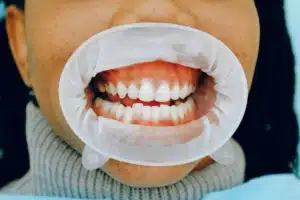Periodontal disease

Periodontal disease, also referred to as gum disease, is a widespread dental condition impacting millions of people globally. It initiates mild gum inflammation (gingivitis) but can escalate into a severe state, leading to permanent harm to the supportive soft tissues and bone of the teeth. Fortunately, South Bay Dentistry presents inclusive solutions to combat periodontal disease, ensuring the protection of your oral health and contributing to improved overall well-being.
Understanding Periodontal Disease:
Periodontal disease is primarily triggered by the accumulation of plaque and tartar on the teeth, fostering the growth of bacteria. These bacteria secrete toxins that incite gum irritation, resulting in symptoms like redness, swelling, and bleeding. If not addressed promptly, the condition can progress, leading to more severe consequences like gum recession, the formation of pockets between the gums and teeth, bone loss, and potential tooth loss. Timely intervention and proper dental care are essential to prevent the escalation of periodontal disease and maintain optimal oral health.
How South Bay Dentistry Can Help:
Expert Diagnosis: At South Bay, we have a team of experienced dentists in Gardena that conducts thorough periodontal evaluations to assess the extent of gum disease. They use state-of-the-art diagnostic tools to identify the stage of the disease accurately.
Customized Treatment Plans: Based on the diagnosis, dentists devise personalized treatment plans to address individual needs. They may include deep cleaning (scaling and root planing) to remove plaque and tartar, reducing inflammation and promoting gum healing.
Advanced Procedures: In cases of advanced periodontitis, South Bay Dentistry offers advanced procedures like gum grafting, bone grafting, and laser therapy to restore damaged tissues and prevent further deterioration.
Ongoing Care and Education: The caring team educates patients about proper oral hygiene practices and provides ongoing support to maintain healthy gums and prevent future recurrences.
Common types of periodontal disease
Gingivitis is the least severe type of periodontal disease, marked by red, swollen gums that may easily bleed. Its primary cause is inadequate oral hygiene, but fortunately, it can often be reversed through professional cleaning and improved oral care practices at home.
Chronic Periodontitis: It is typically prevalent in adults, and stands as the most common form of periodontal disease. Its progression is gradual, posing a risk of gum tissue and bone loss. To avert tooth loss, proper management and maintenance are imperative.
Aggressive Periodontitis: This form of gum disease progresses rapidly and is more prevalent in younger individuals. It can result in severe bone and tooth loss if not treated promptly and effectively.
Periodontitis Linked to Systemic Diseases: Certain systemic conditions, such as diabetes, can exacerbate periodontal disease. Managing the underlying health condition is vital to control gum disease effectively.
Necrotizing Periodontal Disease: This is a rare but severe form of periodontal disease that can cause tissue death (necrosis) in the gums, periodontal ligament, and alveolar bone. It requires immediate professional attention.

